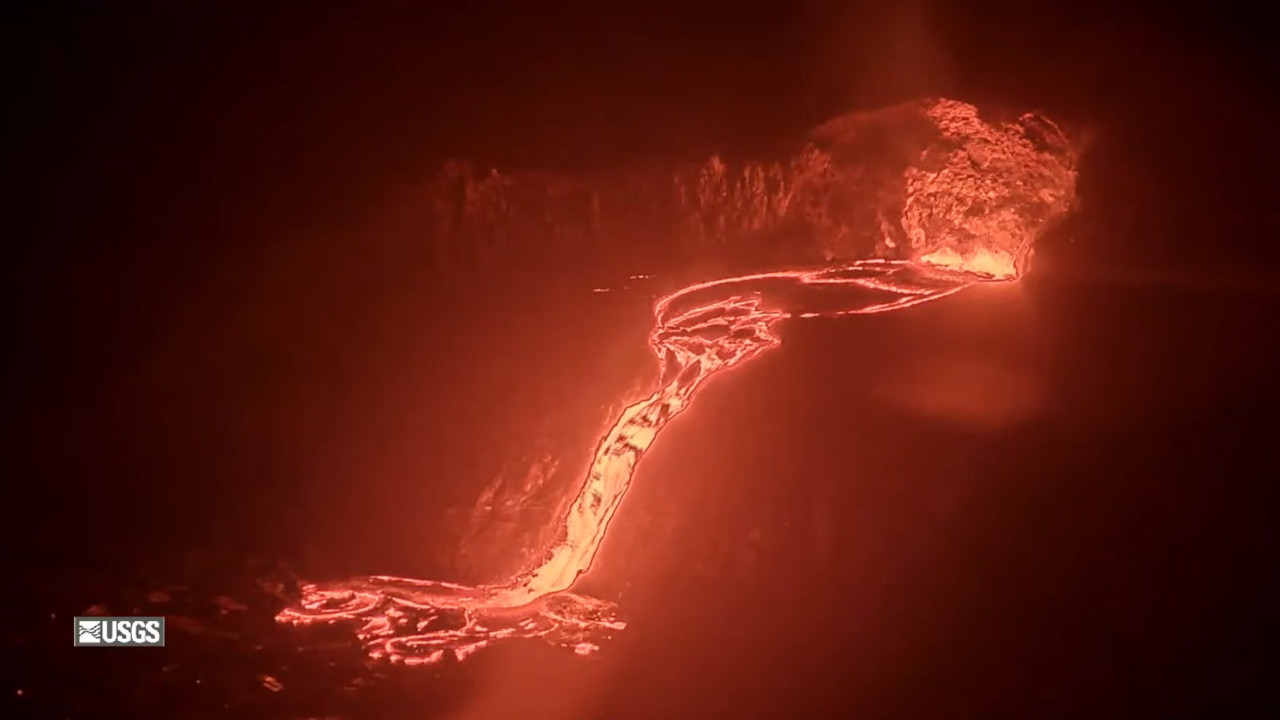(BIVN) – Episode 34 in the ongoing eruption of Kīlauea volcano is set to begin, as precursory lava activity was observed at the summit vent overnight.
With the rate inflation indicating the window for the start of the next episode has arrived, webcams captured the first lava overflow of the north vent at 9:47 PM HST Sunday night.
Drainback of the lava pond and vigorous spattering was finished by 9:53 PM HST, scientists say, marking the first gas piston event with a lava flow.
No significant activity has been noted along Kīlauea’s East Rift Zone or Southwest Rift Zone. The USGS Volcano Alert Level for Kīlauea remains at WATCH.
UPDATE – (9:30 a.m. HST) – From the USGS Hawaiian Volcano Observatory update posted on Monday morning:
Activity Summary:
Episode 33 lava fountaining ended on September 19. Glow from both north and south vents was observed overnight, with nine overflows from the north vent. The summit is reinflating, and models indicate that episode 34 is most likely to start today or tomorrow (September 29 or 30) with small chance of October 1. No significant activity has been noted along Kīlauea’s East Rift Zone or Southwest Rift Zone.
Summit Observations:
Episode 33 lava fountaining ended at 12:08 p.m. HST on Friday, September 19. The UWD tiltmeter shows that the summit has been reinflating since the end of the fountaining episode, with 16 microradians of inflationary tilt. Overnight, HVO webcams showed persistent glow from north vent punctuated by 9 gas piston cycles of overflow and drainback at 9:47 p.m., 2:15 a.m., 4:16 a.m., 5:12 a.m., 6:18 a.m., 6:32 a.m., 7:00 a.m., 7:40 a.m., and 8:14 a.m., each lasting 5-10 minutes. There was intermittent strong glow from south vent. This morning, the caldera is quiet with a passive outgassing plume rising from the vents.
Elevated degassing continues from the vent. Average sulfur dioxide (SO2) emission rates during pauses are typically 1,200 to 1,500 t/d, though emission rates can vary on short time scales. Wind at Sand Hill, just south of Halemaʻumaʻu are blowing from the northeast direction, which suggests that volcanic gas emissions and volcanic material may be distributed southwest across the Ka’u desert within Hawaiʻi Volcanoes National Park.


by Big Island Video News6:39 am
on at
STORY SUMMARY
HAWAIʻI VOLCANOES NATIONAL PARK - Precursory activity in Episode 34 of the Kīlauea eruption got underway overnight at the summit.